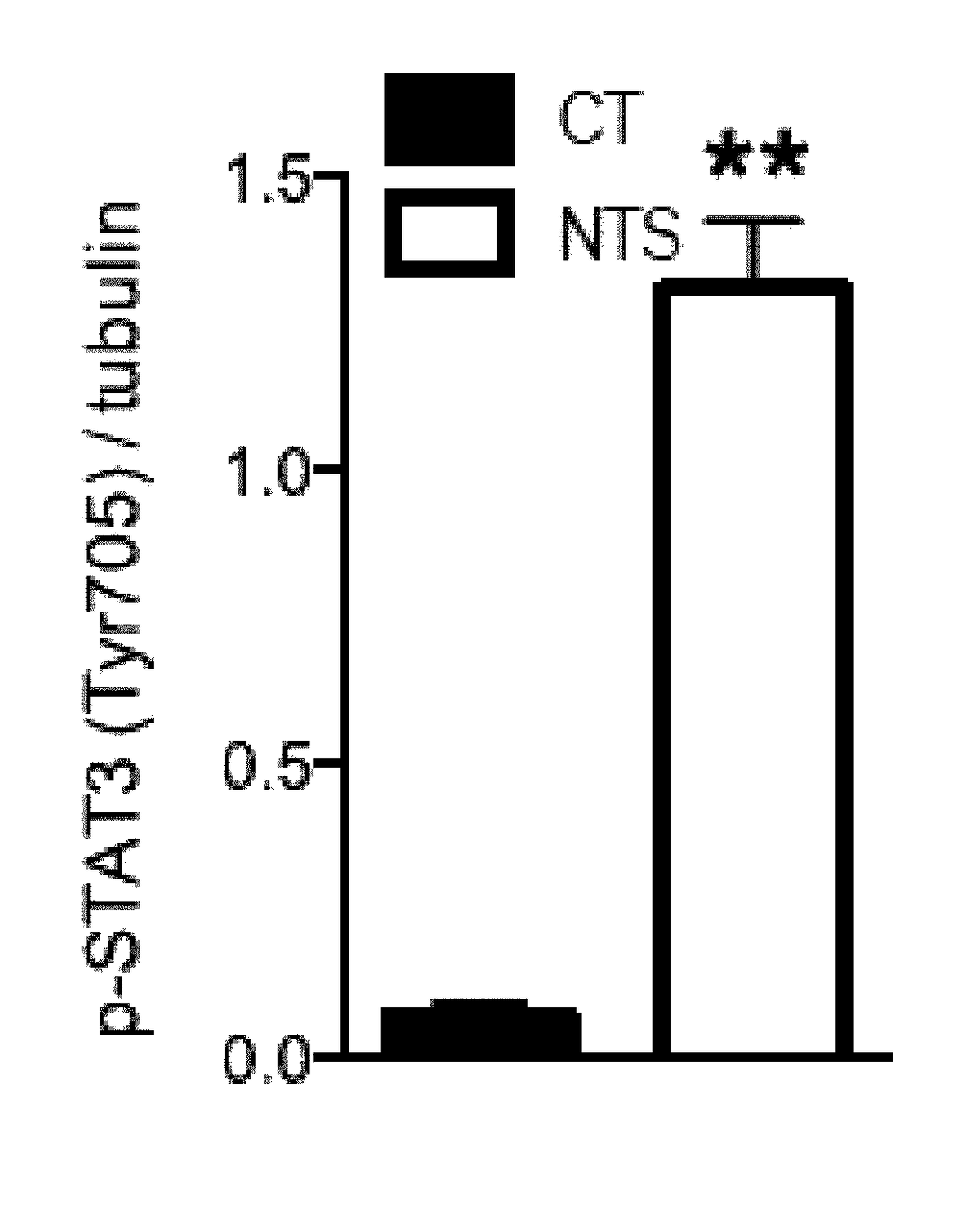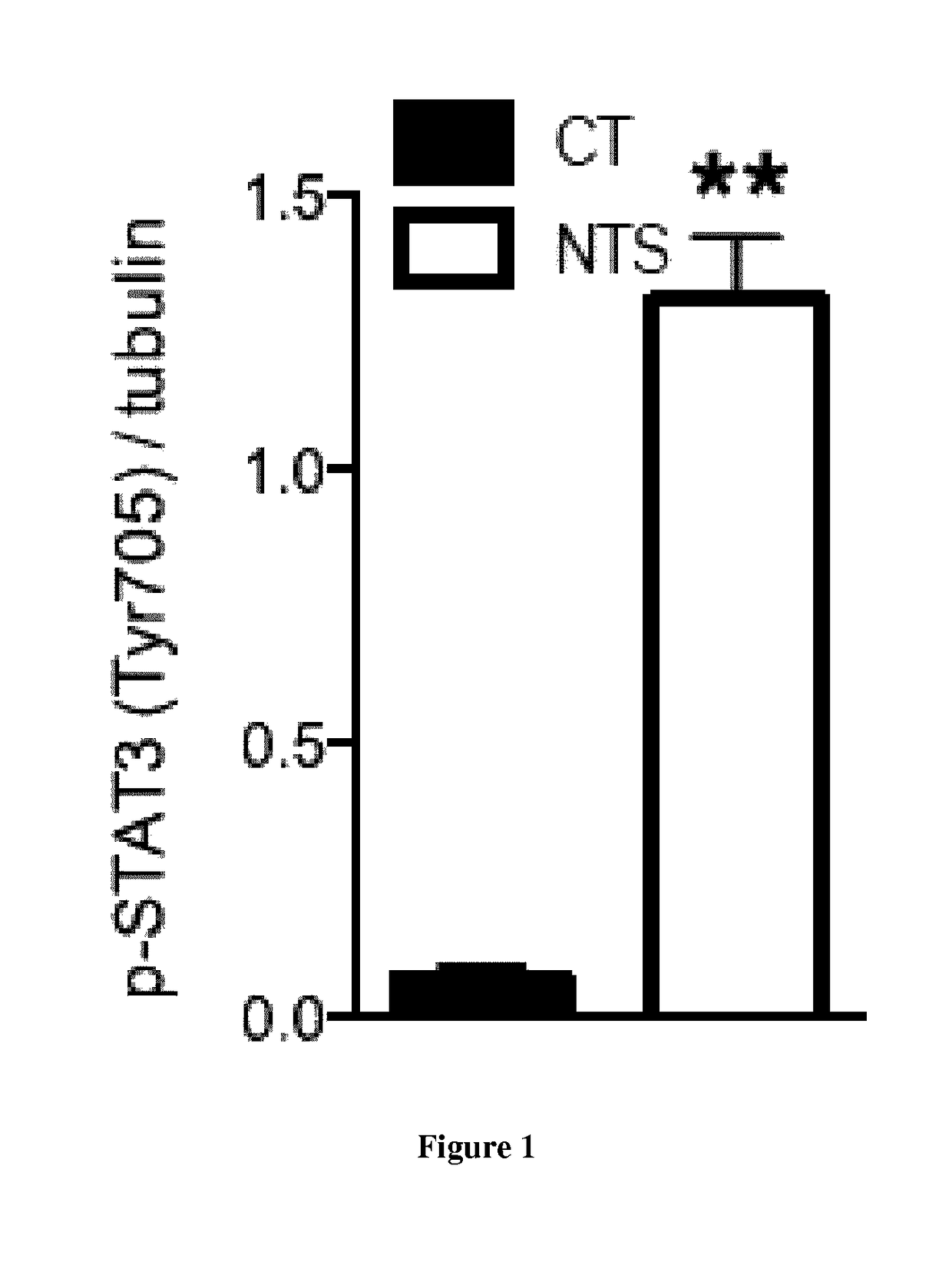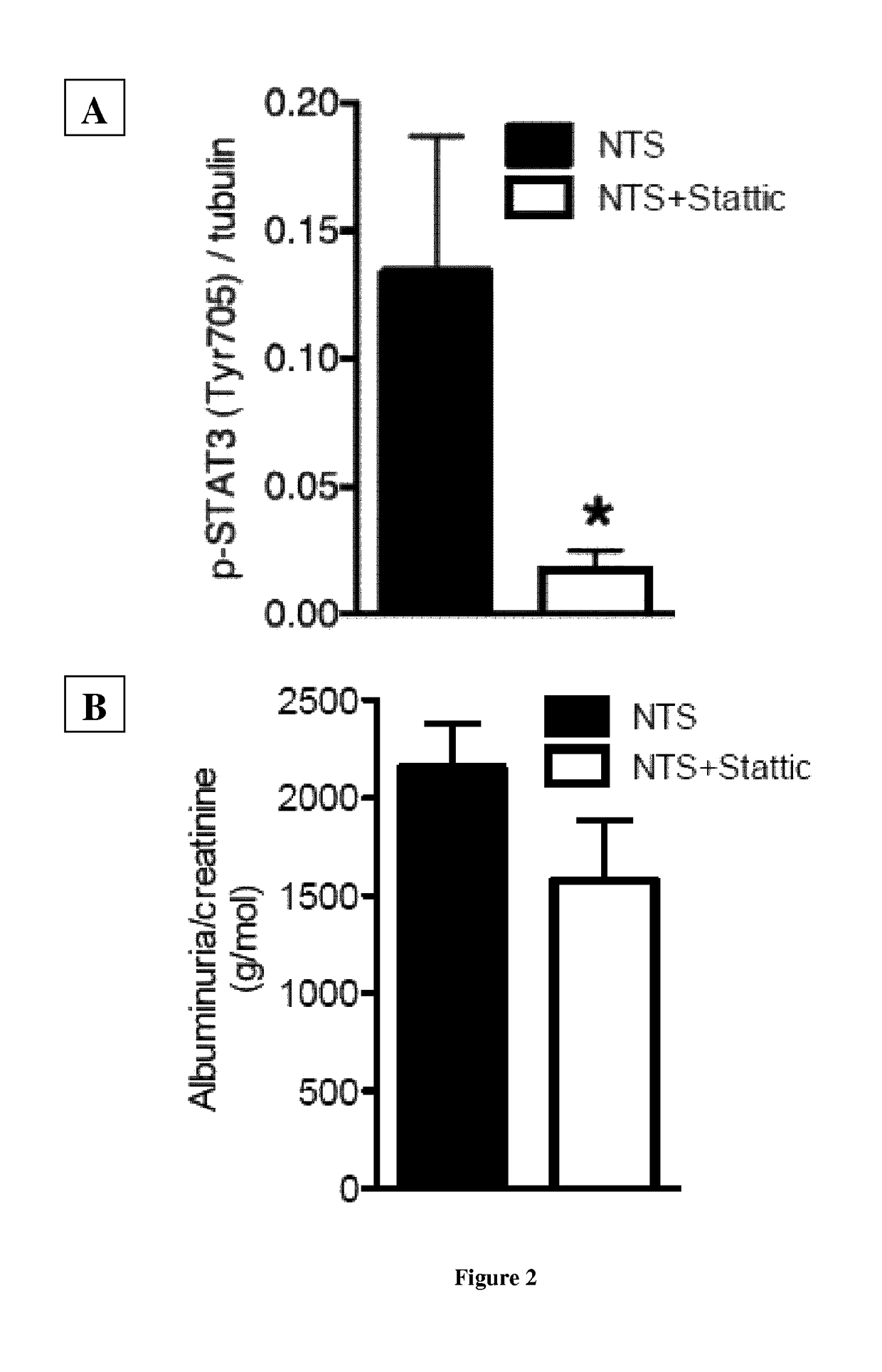Methods for the prevention and the treatment of extracapillary glomerulonephritis
a glomerulonephritis and glomerulonephritis technology, applied in the field of prevention and the treatment of extracapillary glomerulonephritis, can solve the problems of cellular dedifferentiation and profound loss of the function of the glomerular filtration barrier
- Summary
- Abstract
- Description
- Claims
- Application Information
AI Technical Summary
Benefits of technology
Problems solved by technology
Method used
Image
Examples
example 1
[0139]Material & Methods
[0140]Animals
[0141]Podocyte-specific disruption of Stat3 mice were generated by crossing podocin-Cre positive mice (63) with Stat3 floxed mice (64) on C57BL6 / J background. Their age-matched littermates with no deletion of Stat3 in any cells are considered as controls. Pharmacological inhibition of Stat3 was achieved with Stattic, a non-peptidic small molecule that selectively inhibits activation, dimerization and nuclear translocation of STAT3 (65). Stattic (25 mg / kg) was administered in i.p. way every other day for 10 days. 10 weeks old 129S2 / SvPasCr male mice were randomly treated with Stattic and were compared to vehicle-treated (DMSO) littermates.
[0142]Experiments were conducted according to the French veterinary guidelines and those formulated by the European Community for experimental animal use (L358-86 / 609EEC), and were approved by the Institut National de la Santé et de la Recherche Médicale and local University Research Ethics Committee (file 12-62,...
example 2
High Expression of miR-92a in Human Kidneys with RPGN
[0205]To evaluate the clinical relevance of the results obtained in the mouse model, the inventors analyzed miR-92a expression by in situ hybridization and RT-PCR in paraffin-embedded tissue of renal biopsies from patients with RPGN and control patients with non proliferative glomerulopathies (Table 1). MiR-92a labeling was weak and restricted to the endothelium in control human kidneys (non-crescentic glomerular disease). However, miR-92a was significantly upregulated in kidney biopsies from patients with RPGN, regardless of its etiology. In situ hybridization revealed the expression of miR-92a in glomerular cells of patients with RPGN, particularly in podocytes and crescents and to a lesser extent in parietal epithelial cells. RT-qPCR analysis revealed that the expression of miR-92a was three to five fold higher in samples from patients with RPGN of various etiologies including stage III and IV lupus nephritis (Lup), microscopic...
PUM
| Property | Measurement | Unit |
|---|---|---|
| number-average molecular weight | aaaaa | aaaaa |
| number-average molecular weight | aaaaa | aaaaa |
| length | aaaaa | aaaaa |
Abstract
Description
Claims
Application Information
 Login to View More
Login to View More - R&D
- Intellectual Property
- Life Sciences
- Materials
- Tech Scout
- Unparalleled Data Quality
- Higher Quality Content
- 60% Fewer Hallucinations
Browse by: Latest US Patents, China's latest patents, Technical Efficacy Thesaurus, Application Domain, Technology Topic, Popular Technical Reports.
© 2025 PatSnap. All rights reserved.Legal|Privacy policy|Modern Slavery Act Transparency Statement|Sitemap|About US| Contact US: help@patsnap.com



